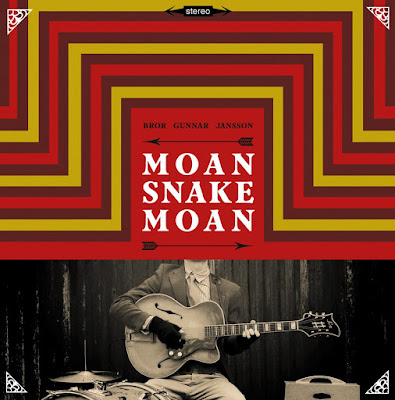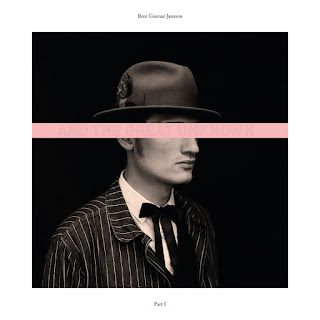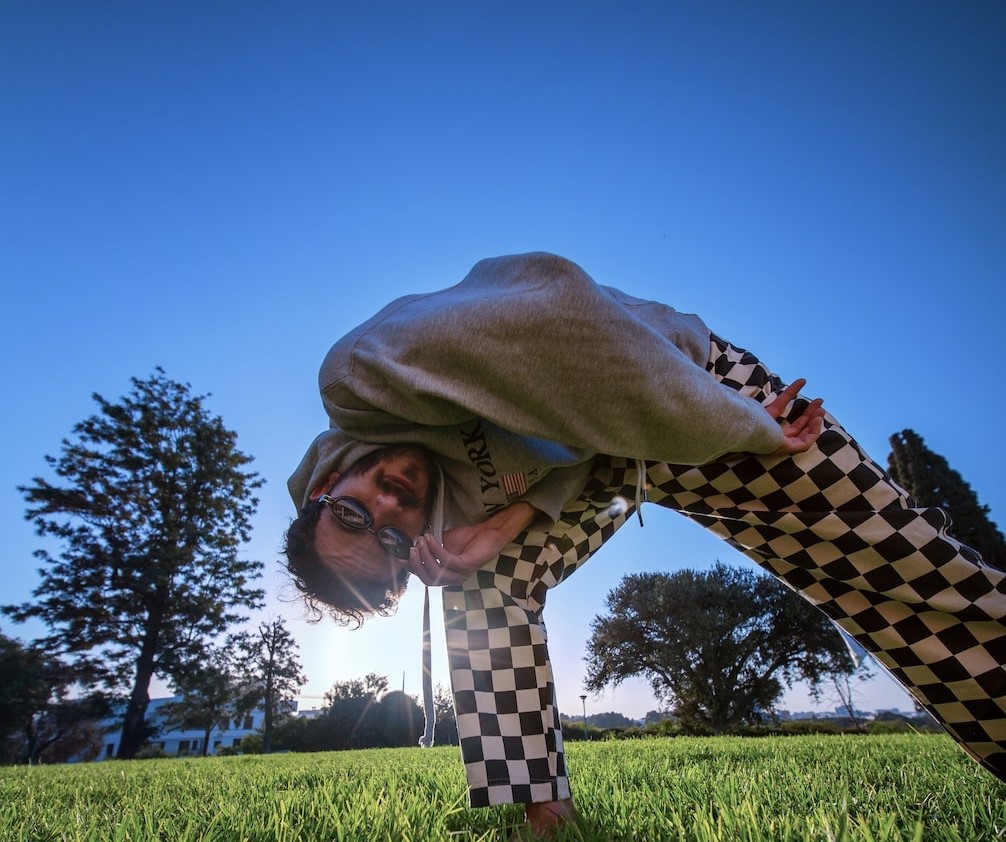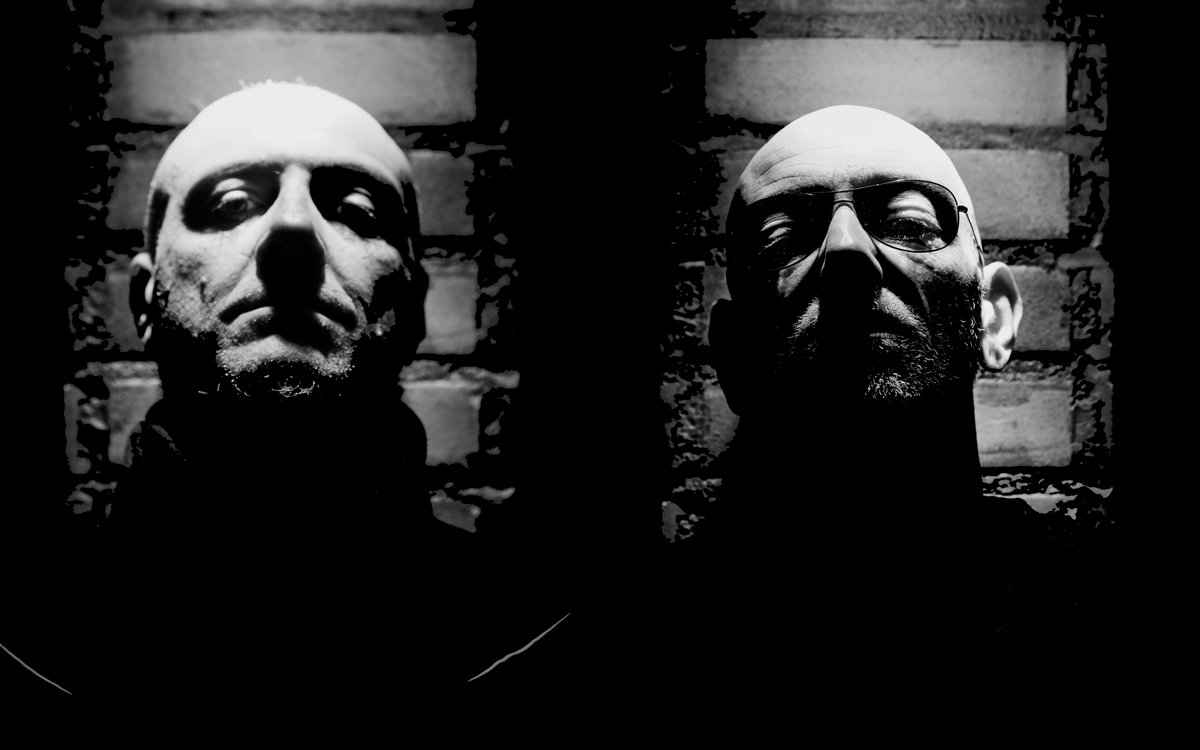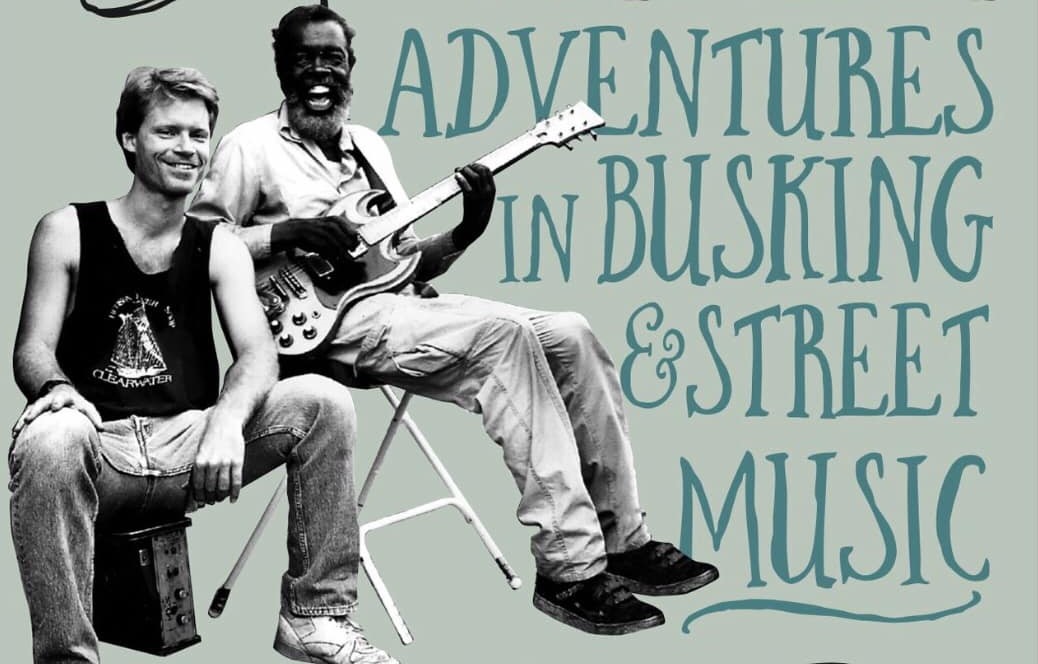Bror Gunnar Jansson: Blues Tradition for the 21st Century
One of the rarely lauded treats of mass media is that different cultural genres can be explored and experienced simultaneously. Watching the T.V. series Damnation I was struck by the song ‘Ain’t No Grave (Gonna Keep My Body Down)’: must be 50s blues or a modern souped-up version by such as The North Mississippi Allstars, maybe even Tame Impala? Nope. Gander my shock when I found it was by…a Swedish one-man band living in Paris! Of course, most of us well know that Scandinavia generally has much at the cutting edge of cross-cultural music, but also a one-man band sounding part Tom Waits, Capt. Beefheart, and John Lee Hooker sharing amps with Canned Heat!
Big hitters, it’s true, but this guy can at least share the same stage as he spans all decades in his music which evaporates time and geography. It isn’t for nothing that Bror means brother in Swedish. Check out the jazz flourishes, Cajun and Cuban rhythms along with blistering (literally) rock on his second, French-released album Moan Snake Moan (Normandeep Blues NDBCD83) with sax, cello, organ, assorted percussion including “sticks, cage and chains”, following his co-released eponymous debut album of 2012. He name-checks in lyrics and appropriately recommends all sorts of stuff on his web as “a one-man band from Sweden, a sleek drugstore cowboy, a missing link between Lightnin’ Hopkins and Kopparmära …the mystery of Bror Gunnar Jansson.” His range is actually even wider than that great bluesman, perhaps Big Bill Broonzy?
This is not only proto-rock in the ethos of legendary one-man bands like Joe Hill Louis (such a tragic demise), Jesse ‘Lone Cat’ Fuller (‘San Francisco Bay Blues’) and Dr.Ross with his doctor’s bag, but later classics like Duster Bennett, Nick Pickett (Greensleeves), and John Fiddler of Medicine Head. The most famous one-man band in Europe was probably Don Partridge, inspired by Fuller and like Jansson has sessioneers sparingly for recordings; he had two top 5 hits in 1968 (‘Rosie’; ‘Blue Eyes’) and a film of 2005 with Liam Neeson named after his featured song ‘Breakfast On Pluto’. On Moan Snake Moan are also tones of pedal-strutting John Martyn and tale-telling Tom Waits or Nick Cave, like his love of films by David Lynch and Jim Jarmush with their overlaying process seen in his recordings crafted with care, fire and magic. Listeners hopefully will not see this as lazy name-dropping when we focus on Gunnar’s album and related stuff.
There is a rich tradition of (true) one-man bands playing instruments simultaneously to this day, starting in far-off times with Fate Norris, Daddy Stovepipe—one of the earliest recorded bluesmen—to Greeley Robertson in country music. Probably Joe Hill Louis was the first recorded, in the 50s, to introduce the format as proto-rock to be developed by Medicine Head and the later work of Duster Bennett, while Jesse Fuller invented a home-made fotdella (as coined by his wife, it used piano strings as a foot-bass and was pronounced footdella). Big Joe Williams stunned 60s festival hippies with a 9-string guitar, for power unison and variant tunings near-impossible to copy (like our subject) plus percussion rigged to the amp and round his neck!
John Lee Hooker, one of Gunnar’s inspirations, taped bottletops under his shoes for the beat—could this be the origin of heavy metal music?! Perhaps he just didn’t want to invest in a drum and hi-hat. This is no idle thought, because one-man bands originally wanted to save costs (being paid for each instrument as if had a musician!) and avoid let-downs for gigs by other musicians otherwise engaged. It’s no mean feat to get everyone together in the same place and time, as anyone in the biz knows. But no time either to slyly slip off or urinate in a bottle under a table like J.Morrison if tanked up! Like his instruments and gear, he’s the essence of Do-It-Yourself as if no disparity between sole and soul.
One-man bands replace decibels with artful energy, compressed into a space compact as a neutron, allowing song-power to spark in the created vortex. It’s been likened to music and dance merged into one in its pagan frenzy. Bror Gunnar ramps but not amps up the energy, even on thoughtful slow ballads, evoking the intensity of the music’s roots. Here we have texture in a well-woven canvas, with weapon-grade boogie smouldering then loaded enough to ignite the touch-paper: stand back and marvel!
Ten tracks on Moan Snake Moan of 48 minutes show Jansson has chops and originality to extend the standard blues format even to 8 minutes. Every song holds interest full-length, without dips or fillers. ‘The Church Bells’ Tone’ nods its title to the gospel of ‘Pops’ Staples, but the collage includes lyrics from Blind Lemon Jefferson and Howling Wolf in a stomping staccato boogie complete with fuzz, cowbell and zurna, a Balkan wood instrument. The title track (its second part issued on 8” vinyl by Stencil Trash Records) was inspired by the Cajun legend Clifton Chenier’s ‘Black Snake Blues’ with its coiling Hoodoo spells, a plains rattlesnake poised to hiss and hypnotize. Popular live, it climaxes with emotive hollering over riffing.
‘William Is Back’ adds banjo to his multi-instrumental armoury, augmented by Kristin Norden on pump organ, Emma Augustsson cello, David Edefors bass tuba, Max Lindahl trumpet and Emanuel Svensson on drums (who guests on a couple of tracks). Like Waits and Cave, the title refers to a figure of traditional songs, William Joseph Dean who just returned from the dead tries to bring hell to earth, a bit like Candyman of blues lore. His mother was a crazy, god-fearing Christian fanatic called Mary Lee responsible for her son’s evil origins and reprised in other Jansson songs. William murdered his wandering girl-friend Pretty Polly, who also peppers traditional songs. The old-style vocal with its breathy outro adds gravitas over a pump organ sounding like Nico’s harmonium for a pure five-and-a-half minute story-telling trip. Dean again surfaces but from the viewpoint of one of his victims (‘He Had A Knife In His Hand’), where Cave and Howling Wolf are also referred to. This rumble closes with a mean and menacing fuzz solo.
This is extended further in time on ‘One For Earth’, an instrumental homage to the Seattle-based band Earth not first incarnation of Black Sabbath, with tenor saxophone sounding like bluesy harp and Hooker-like fuzzed solo. ‘Ain’t No Grave’, the aforementioned film track, is the only cover song. Made famous by Brother Claude Ely in the 1950s, it was first recorded by Bozie Sturdivant from a Baptist Church in 1942, then Johnny Cash in 2010 from seven years earlier. So gospel-blues tradition is here wrenched into the current century with smoking boogie building to a mean full-on crescendo of energy aimed against “the band of angels”, clanging with bottleneck as if on a 12-string. Various guitars, sax, drums with “sticks, cage and chains” (plural!) are added a la middle-period Waits.
‘New Mountain Ballad #1’ is the LP’s longest and oldest track (2009 rather than 2012), a slow heart-wail of a love song, oozing blues aches but not clichés, before ‘TV’: a sarcastic Earl Beal-inspired comment on staying up all night watching bad programmes, appropriately with haunting echo vocal. Another character appears as ‘Butch’, based on his namesake in Pulp Fiction from another decade, here transposed to an illegal immigrant from Cuba plying the same pugilist profession. We’re told he may be reprised elsewhere later. Its coda “No man, no woman” shows the roots; forget Marley’s rasta hype.
The finale is the jaw-dropping ‘God Have Mercy’ that one moment could be 60s (or electronica with traditional instruments!!) but becomes a six-minute-plus storm of energy, style and noise, culminating with Kristin Norden’s organ swathes as if gospel served up in a psychedelic brew. Or Son House with his graveyard balladry among the shades of Robert Johnson and his like. A promo film by Herman Hansson (2015) on Youtube needs to be seen to be believed. Gabriel eat your heart out, this is pure art and not clutter from any old popular rubbish tip. The album was nominated album of the week by Canal + and Best Blues Disc by the Charles Cross Academy.
Also on view is live at the celebrated Parisian club La Maroquinerie in snazzy waistcoat and Fedora. One review called it “Dandy Blues”, another “Blues of the Bayou…Swedish”. How this guy packs so much passion into a set without oozing sweat, blood, or spoiling his chic duds is another mystery. Blues old and new, including a modernised version of the classic ‘Walking Blues’ covered as a live-staple by the original Medicine Head. There’s also John Martyn-like ballads, but here the foot pedals are lined up behind atop the amp. With his own one-man band format, the bass drum is side-on with snare and hi-hat but no harmonica and sometimes percussion-striking guitar strings. Then there’s the earlier live ‘Ain’t No Grave’ in a Gothenburg backyard, where bass drum is replaced by guitar case and foot snare played in socks as did Fuller with his fotdella…and what a holy racket of pure fun it is!
With trance-like expression similar to Johnny Winter or Duster Bennett, Jansson is also a moving charismatic vocalist, whether hollering like legendary blues and gospel singers or intoning ballad stories that arrest attention. Born near Gothenburg 30-odd years ago to a family line of musicians, his father was a renowned jazz bassist who toured with Chet Baker, Toots Thielemanns etc. They were in a group together called Serves You Right To Suffer, a homage to John Lee Hooker, when Gunnar haunted local jazz and blues clubs before he was old enough to work there playing in various groups. All these currents are now exemplified in the DIY music blazed by one-man bands, Medicine Head (a duo who wanted to replicate what anyone could do in their own home; Joe Hill Louis used to throw percussion to the audience to join in), and the later Punk movement in its fiery delivery. He may be roaming the American southern states in his heart but has a headful of Swedish folklore and scripture poetry too, writing on one guitar neck: “O death, where is thy sting?”
We caught up with Gunnar during his extensive North Europe tour. How did you come to your original style and decision for your musical expression?
I’ve always been into live music. I grew up in a musical family, me and one sister are the fourth generation of musicians on my father’s side, so grew up with a lot of live music especially jazz and different kinds of folk music. I practically grew up at the local jazz club Nefertiti, where I saw so many great bands and musicians. In fact I spent so much time there that guests as well as staff thought that I actually was working there, although still way too young to do that.
Were legends like Joe Hill Louis or Jessie Fuller, Medicine Head or Duster Bennett in England an influence? What about Don Partridge who moved to Gothenburg (twice), toured with Swedish band Slim Volume, and recorded two albums there for AB Europa after his world hits?
Don Partridge is a name that often comes up when mentioning in Sweden you’re playing a one-person band. Don’t think I know any others from UK though, but have seen and heard so many when travelling in Europe, with so many from Germany, Netherlands, France, Italy, Portugal (like USA of course) etc. I’ve never really felt like I’m part of the one-person-band stage though, but guess in some ways I am. I don’t think much of genres and their scenes because doesn’t really matter to me, having always made music that doesn’t really fit any pigeon-holes anywhere, and I kinda like that…
Your website says you are influenced by Lightnin’ Hopkins and Kopparmärra?
Not as influences but more as mood setters. The Kopparmärra thing (a statue in my hometown square) was more of a gag really. I think I’ve too many influences to mention, often finding inspiration from a lot of different directions. For instance, the next album’s main influence has been real life crime investigations in Sweden. Much of the information found for these new songs comes from different True Crime podcasts.
How do you compare your first two albums?
Well, the first one (S/T, 2012) is very down-to-earth and bluesy, basically one-person-band stuff live in a nice studio recorded over just a weekend. Moan Snake Moan was a much bigger project, more people involved and bigger production. And it’s moving in some more directions I guess. In the same period I recorded another live issue, as an 8”EP, but this was even more basic than my first album, using only one microphone directly onto tape by the late great Jonas Olpers just before a gig, a dubplate on wax in only 49 copies by German label Stencil Trash Records.
In 2016 I started recording an even bigger project than Moan…, my latest release And The Great Unknown Part 1 & 2, part 1 is an EP and part 2 is a full-length LP. This release is more cinematographic than previously, and more kinda Southern Gothic I guess. The next album will differ from all the others: one part is based on regular one-person-band and the other part is more rock ‘n’ roll, a bit of a mix between Led Zeppelin, White Stripes, Kyuss and Earth or something.
What does “sticks, cage and chains” on Moan… refer to, and is the use of a pump organ a nod to your grandfather who played accordion?
Quite literally I play on some big wooden sticks, a big metal cage and heavy chains on some tracks. I’ve never thought of that [link], always liked accordions though. I think it had much to do with my fascination for that specific pump organ, owned by a friend. You can fold it together and then looks like an old suitcase.
You use a sharp array of guitars but not the well-known models like Hooker and his Gibson. Do you prefer a different sound?
Yes. I am in love basically with sound. It’s easy to get bored hearing the same sounds and songs too often, I like variety. And different sounds are often easier to find on different kinds of gear. I constantly work with my sound and try out gear with ways to colour the sounds that I want to create. Nowadays much of my sound comes from pedals and how I use them. Since I travel a lot and can’t take my own amp everywhere, it’s practical to build most of my guitar sound in my numerous pedals, some of which are custom-built. Sometimes bottleneck and capo are used but mainly lots of variant tunings, it’s quite helpful to try other tunings when writing songs and can open up other ways of thinking.
You have an original way with percussion even in its layout. A snare for a bass drum! Does this also reflect personal choice for the sound?
My setup is usually either an old 1940s WFL, a Levin bass drum or a new vintage-inspired one from Think Drums. The snare, a 90s Ludwig or a new Think, is a bit modified, as is the hi-hat: the bottom cymbal has rivets and top is an old cheapo Japanese cymbal which is quite dark and clonky. I use the hi-hat more like a crash or ride cymbal, and that’s why I have a little rubber thing between them so that I don’t accidentally close it but leave it to ring out its tone and sizzle. The stand is modified too, it’s without legs and the height is shortened quite a bit. From time to time are added some small percussions like shakers, tambourine and cow bell. Back on Moan… an old wooden guitar-case was used as a bass drum.
You are clearly a very talented multi-instrumentalist. Is there any reason for no harmonica, popular in the one-man band blues genre: is it to make the sound more modern-sounding perhaps, or to stretch yourself in other directions?
I never really had the patience to learn the harmonica. I really like their sound though. Growing up I tried out a bunch of instruments, cello, bass clarinet, electric bass, zurna…but my main instrument was saxophone for many years. When aged 20 or so I started to sing and play guitar more professionally, and since ’08 or ’09 I have this one-person-band thing…
Unusually for English-speaking musicians you now live in Paris?
I’m not spending any time in Paris for the moment. Most gigs this year are in northern countries, but next year in 2019 will be even more touring I think with the new album coming out then, which usually means more touring! Half consists of songs about murders that happened in Sweden, some historical cases from the 17th century and some modern ones from 2017-2018. One actually was really close to home too, quite literally, on the street where I live.
So, music-lovers, the saga continues! With all its nods this is 21st century blues-rock, fuzz, feedback (tremolo) and echo all-in. A 1950s setting, evoked by smoke-and-light, keeps audiences magnetized by the fluid tempos with solos rare for a one-man band, and whistles (rarer) or hoots replacing harmonica and kazoo. If you like what R.L.Burnside or Hooker with Canned Heat did for the contemporary sound of blues, or Leslie West or Del Bromham did with their back catalogues (perhaps Rory Gallagher and Johnny Winter if they had lived longer?) then you’ll love this. Authentic grit, but not in your eye, this is the wild shuffle of preachers tortured by the flames licking their soles and ankles: dark, screaming, poetic. Smoking like a cobra exposed to a spliff, burning like a ZZ Top retro, it is passionate as soul without the posturing, gospel without the puff-and-huff. In short, pure unadulterated fun, which has become less easy these days if you care about head, heart and body. A joy awaits, am I wrong to name-drop?
With thanks to Bror Gunnar Jansson, and Johan Karlberg.
– Brian R. Banks
© Copyright http://www.psychedelicbabymag.com/2018
Array

